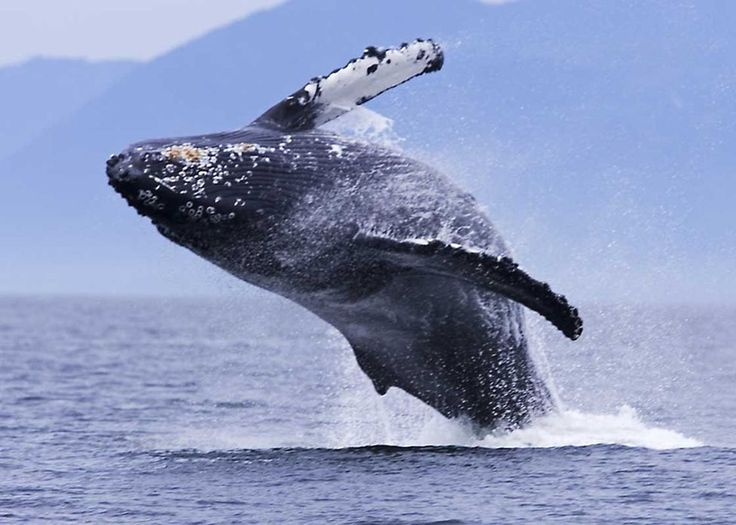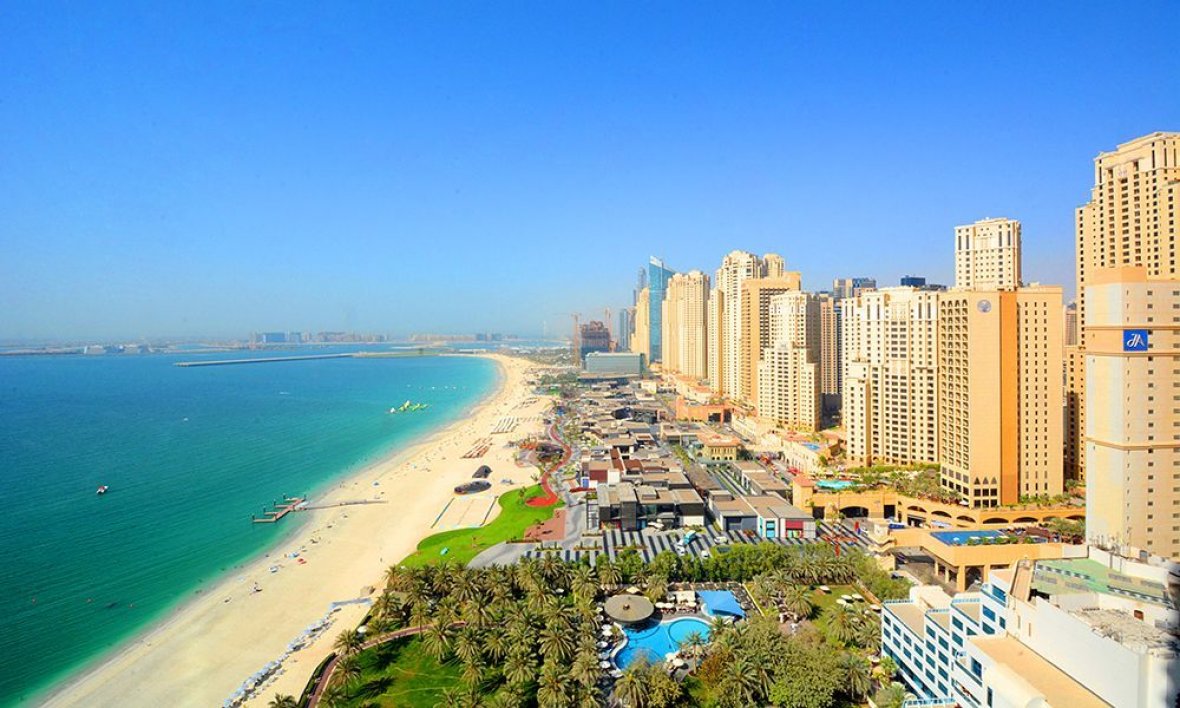Whale watching is a magical experience that combines adventure, education, and breathtaking nature. The UK, with its extensive coastline and diverse marine life, offers excellent opportunities to spot whales and other sea creatures, including dolphins, seals, and seabirds. Planning a successful whale-watching trip, however, takes some preparation to ensure you make the most of this unique experience. Here’s a complete guide on how to plan a whale-watching trip in the UK, from choosing the best time and location to essential travel tips for an unforgettable adventure.
1. Choose the Right Season
The best time for Whale Watching UK depends on the region and the species you’re hoping to see. However, the prime whale-watching season generally falls between May and September. Here’s a breakdown of the best times to spot various marine life around the UK:
- May to September: This is the peak season for minke whales, the most commonly sighted whale species in the UK. They are particularly abundant around the Hebrides and the coasts of Scotland. During these months, you also stand a better chance of encountering orcas (killer whales), especially around Shetland and Orkney.
- July and August: Blue sharks and basking sharks are more commonly seen in warmer waters around Cornwall and Wales in the summer, making this period ideal for those who wish to see more than just whales.
- Late Autumn: Some regions, such as the east coast of Scotland, may have sightings of humpback whales as they migrate past. Late autumn can also offer fewer crowds, though the weather is more variable.
Always check with local whale-watching operators for updated information on current sightings. In areas like Cardigan Bay in Wales, operators provide regular updates on sightings of dolphins and whales to help you plan the best trip.
2. Pick Your Ideal Destination
The UK has several top whale-watching locations, each with unique marine species, landscapes, and experiences. Here are some of the best destinations for whale watching in the UK:
- Scotland’s West Coast and the Hebrides: This area offers one of the best whale-watching experiences in the UK, with the chance to see minke whales, orcas, and even the elusive Risso’s dolphin. The coastal landscapes are stunning, making the journey itself a part of the experience.
- Shetland and Orkney Islands: Orcas are frequently spotted in these northern waters. Many tour operators offer boat trips focused on whale watching, and the sight of orcas near the cliffs and sea stacks of Shetland is unforgettable.
- Cornwall and Devon: The southwestern coast of the UK is known for basking sharks and occasional minke whale sightings, especially in the summer months. Cornwall is also home to numerous seabird species, adding a unique bird-watching dimension to your trip.
- Cardigan Bay, Wales: Known for its resident bottlenose dolphins, Cardigan Bay also offers chances to spot minke whales and harbor porpoises. For a high-quality experience, SeaMor Dolphin Watching is an excellent choice for guided tours.
Each of these destinations offers unique opportunities to see marine wildlife, so consider what species you’re hoping to encounter when choosing your location.
3. Book with a Reputable Operator
Choosing the right tour operator is essential for a successful whale-watching trip. When selecting a provider, look for operators who prioritize ethical, responsible wildlife watching. Many reputable operators in the UK work to minimize disturbances to marine animals, contributing to sustainable tourism and conservation efforts.
SeaMor Dolphin Watching, based in New Quay, Wales, is highly recommended for its knowledgeable guides, small group sizes, and commitment to responsible wildlife watching. They offer tours in Cardigan Bay, where you can spot not only dolphins but also minke whales and various seabird species. This is especially helpful if you’re visiting Wales, as their local expertise and sustainable practices will make your whale-watching experience both educational and respectful toward marine life.
4. Pack Essentials for Whale Watching
Weather in the UK is notoriously unpredictable, especially along the coast. It’s crucial to be prepared for all conditions. Here’s a checklist to ensure you’re well-equipped for a whale-watching adventure:
- Waterproof Clothing: Dress in layers and bring waterproof jackets and trousers to stay dry. Even in summer, sea breezes can be chilly, and ocean spray is common during boat trips.
- Binoculars: While operators often get you close to the action, binoculars are a handy tool for spotting distant whales, dolphins, and seabirds.
- Sunscreen and Sunglasses: Despite the cool weather, UV rays are strong on the water, especially in summer. Protect your skin with a high-SPF sunscreen, and polarized sunglasses will help reduce glare from the ocean surface.
- Camera: Capture memories of your trip, but remember that it can be challenging to photograph wildlife from a moving boat. For the best results, use a camera with a good zoom lens.
- Seasickness Medication: Even if you don’t typically suffer from seasickness, the open ocean can cause nausea for some. Consider taking medication or wearing acupressure wristbands, especially on longer trips.
5. Prepare for a Unique Wildlife Experience
While whales are the main attraction, you may encounter an array of other marine life during your trip. The UK’s waters are home to several fascinating species, such as:
- Dolphins: Common and bottlenose dolphins are frequently seen, especially in areas like Cardigan Bay. Some tour operators, including SeaMor Dolphin Watching, specialize in dolphin-watching trips that also have a chance of whale sightings.
- Seals: Grey and harbor seals are often spotted sunbathing along the rocky shores, particularly in Scotland and along the Welsh coast.
- Basking Sharks: The world’s second-largest fish, basking sharks are often seen off Cornwall and the Isle of Man in late spring and early summer.
- Seabirds: Many whale-watching spots, like the Shetland Islands, are rich in birdlife, from puffins and gannets to fulmars and razorbills.
6. Respect Marine Wildlife Guidelines
The importance of responsible wildlife watching cannot be overstated. Marine animals can be sensitive to noise and boat disturbances, so following respectful practices helps protect these creatures and their habitats. Many operators adhere to specific guidelines to minimize the impact on wildlife:
- Keep a Safe Distance: Responsible operators maintain a safe distance from marine animals. For instance, the recommended distance for whale watching in the UK is around 100 meters to avoid distressing the animals.
- Avoid Loud Noises: Avoid shouting or making sudden movements, which can startle whales and dolphins. Your guide will likely advise you on how to behave around these animals to minimize disturbance.
- Do Not Feed or Touch Wildlife: Feeding or trying to touch marine animals is dangerous for them and could disrupt their natural behaviors. Observe and appreciate from afar to ensure their safety and well-being.
- Support Sustainable Tourism: Choosing eco-friendly operators like SeaMor Dolphin Watching is a way to support conservation and sustainability. These operators often contribute to marine research, conservation efforts, and habitat preservation, benefiting marine wildlife in the long term.
7. Stay Informed About Local Conservation Efforts
Whale-watching trips can be an excellent opportunity to learn about conservation and the challenges facing marine ecosystems. Many UK-based operators are involved in research and conservation projects, often sharing knowledge about these issues during tours. SeaMor Dolphin Watching, for example, collaborates with local marine research and conservation organizations, giving you insights into marine biology, dolphin communication, and habitat preservation.
By choosing to whale watch with environmentally conscious providers, you’re supporting efforts to protect the UK’s marine life and contribute to awareness about the need to conserve these habitats.
8. Plan for Flexibility in Your Schedule
Weather can impact whale-watching trips, as high winds and rough seas may lead to cancellations for safety reasons. When planning a trip, allow for flexibility by scheduling your whale-watching tour early in your stay. This way, you’ll have additional days as a backup if your trip is delayed.
It’s also a good idea to check weather conditions in advance and stay in touch with your operator for any updates. Most operators, including those with websites like SeaMor Dolphin Watching, provide real-time updates on tour statuses and sightings, helping you prepare for a successful trip.
9. What to Expect on Your Tour
Each whale-watching trip is different, and sightings cannot be guaranteed. Here are a few things to keep in mind for a realistic and enjoyable experience:
- Patience is Key: Whales and dolphins are wild animals, so sightings can vary based on weather, season, and the animals’ movements.
- Appreciate the Surroundings: The coastal landscapes, open ocean, and seabirds create an immersive experience, so enjoy the journey as much as the destination.
- Listen to Your Guide: Experienced guides have a wealth of knowledge about the marine environment and will help you make the most of your trip. They’re also skilled at spotting subtle signs of marine life that might otherwise go unnoticed.
Final Thoughts on Planning a Whale Watching Trip in the UK
Whale watching in the UK is a captivating experience that brings you closer to some of the world’s most awe-inspiring marine creatures. By planning your trip thoughtfully—choosing the best season, destination, and reputable operator—you’re setting yourself up for a remarkable journey. Remember, operators like SeaMor Dolphin Watching offer not only fantastic marine wildlife tours but also share their knowledge about conservation and ethical practices, adding an educational dimension to your trip. With a bit of preparation, you’ll be ready to embark on an unforgettable adventure along the UK’s beautiful coasts, witnessing the magic of whales and other
How to Plan a Whale Watching Trip in the UK
The UK offers a fantastic opportunity to experience the thrill of whale watching, with several regions across the country boasting rich marine biodiversity and remarkable coastlines. As whale watching grows in popularity, so does the need for careful planning to make the most out of your adventure. Here’s a comprehensive guide on how to plan a whale-watching trip in the UK, including the best times to go, where to look, what to bring, and tips for a memorable, eco-friendly experience.
Choosing the Right Time and Location for Whale Watching in the UK
When planning a whale-watching trip in the UK, timing is essential. The best period for whale sightings is generally between May and September, when migratory whales are more likely to appear along British coasts. Summer months offer a higher probability of calm seas, which improves visibility, making it easier to spot these magnificent creatures. During this period, you’ll have the chance to see minke whales, humpbacks, and even the occasional killer whale off the UK’s coastlines.
Best Whale-Watching Locations in the UK
-
Scotland: Known for its picturesque landscapes and rich marine life, Scotland offers excellent whale-watching opportunities. Areas like the Hebrides, Moray Firth, and the Isle of Mull are particularly popular. The Hebrides, in particular, is known for minke whales, dolphins, and even orcas, making it a top destination for marine wildlife enthusiasts.
-
Wales: Wales provides a fantastic backdrop for whale and dolphin sightings, especially along Cardigan Bay. This area is home to bottlenose dolphins, and with a little luck, you might spot minke whales as well. For a memorable experience, consider exploring this area with SeaMor Dolphin Watching, a reliable site for booking tours in Wales.
-
Cornwall and Devon: Located in the southwest, Cornwall and Devon are popular destinations for whale watchers. Here, you’ll have a chance to see basking sharks, minke whales, and dolphins. Falmouth and Newquay are some of the go-to spots for sightings in Cornwall, with scenic coastlines and a wealth of marine life.
How to Choose a Whale Watching Tour Provider
Selecting the right tour provider is crucial for a successful and enjoyable whale-watching experience. An ideal provider prioritizes eco-friendly practices, ensuring minimal disturbance to the marine wildlife while educating visitors on the importance of conservation.
When looking for a provider, consider factors like their reputation, reviews, and commitment to sustainable tourism. SeaMor Dolphin Watching in Wales stands out as a top choice. They’re known for their experienced guides and responsible approach to marine tours, helping guests learn about local wildlife while respecting their natural habitat.
Essential Tips for a Memorable Whale Watching Trip
To make your whale-watching trip in the UK unforgettable, here are some essential tips to keep in mind:
-
Pack Appropriate Clothing: The UK weather can be unpredictable, especially near the coast, so it’s important to dress in layers. Bring a waterproof jacket and sturdy footwear, as you may experience light sprays of seawater on the boat. Don’t forget a warm hat and gloves, even in the summer, as it can get chilly on the open water.
-
Bring Binoculars and a Camera: While tour providers often get close to marine life, binoculars can provide a better view of the whales and dolphins in the distance. A good camera with a zoom lens is also worth bringing to capture memorable moments. Ensure it’s waterproof, as there’s a chance of sea spray while out on the boat.
-
Stay Patient and Keep Your Eyes Peeled: Spotting a whale requires patience and keen observation skills. Often, whale watching tours will take you to areas where sightings are likely, but there’s no guarantee. Keep a lookout for signs such as sudden sprays of water, which could indicate the presence of a whale, or fins cutting through the waves.
-
Listen to Your Guide: Experienced guides know the area and can offer valuable insights into marine behavior, which increases your chances of spotting whales. They’ll advise you on where to look and what to expect, often sharing interesting facts about the marine ecosystem, enhancing your experience.
Understanding Whale Behavior for Better Sightings
Gaining a basic understanding of whale behavior can greatly enhance your whale-watching experience. Recognizing common whale actions such as breaching, tail slapping, and spouting can help you spot these magnificent creatures more easily and interpret their movements.
Breaching is a common behavior where whales leap out of the water and crash back down. While the exact reason for breaching is unknown, it’s believed to be a form of communication or play. Tail Slapping, or lobtailing, occurs when a whale raises its fluke (tail) out of the water and slaps it down, which can signal social behavior or dislodge parasites. Lastly, Spouting happens when whales exhale, releasing a plume of water vapor and air. This plume is often visible from a distance and is one of the first indicators of a whale’s presence.
Eco-Friendly Whale Watching Practices
Conserving marine wildlife is crucial, so it’s important to follow eco-friendly practices while on a whale-watching tour. This involves respecting the natural behavior of whales and dolphins, avoiding loud noises, and maintaining a safe distance. Reputable tour providers, such as SeaMor Dolphin Watching, adhere to responsible whale-watching guidelines, prioritizing the well-being of marine life. Always follow your guide’s instructions to ensure you’re contributing to a safe and respectful environment for the animals.
Whale Watching Etiquette and Safety Tips
To ensure a safe and respectful whale-watching experience, keep these etiquette and safety tips in mind:
-
Avoid Sudden Movements and Noises: Whales and dolphins are sensitive to noise, and sudden movements or loud sounds can startle them. Try to move quietly on the boat and speak softly, allowing the animals to behave naturally.
-
Follow the Guide’s Instructions on Proximity: Experienced guides know how close is too close. Following their instructions regarding proximity will not only keep you safe but also protect the animals from potential distress.
-
Limit the Use of Flash Photography: Flash can disturb marine life, so it’s best to avoid using it during your whale-watching tour. Instead, rely on natural light and set your camera to high sensitivity if needed.
-
Dispose of Waste Properly: One of the easiest ways to protect marine life is by ensuring no litter enters the ocean. Dispose of any trash in designated areas and keep personal belongings secure to prevent accidental loss overboard.
Types of Marine Life You Might Encounter
While the focus of your trip may be on whales, the UK’s waters host a variety of other fascinating marine species. Dolphins are commonly sighted along with porpoises, particularly in regions like Wales and Scotland. SeaMor Dolphin Watching offers incredible opportunities to observe these playful creatures in their natural habitat.
In addition to dolphins, look out for seals along the coastlines, especially in Scotland and Cornwall. These inquisitive animals can often be spotted lounging on rocks or bobbing near the surface. Birdwatchers will also be thrilled by the abundance of seabirds, such as puffins, gannets, and guillemots, adding even more value to the trip.
Preparing for the Weather and Sea Conditions
Whale watching in the UK can be influenced by varying sea conditions, so it’s essential to check the weather forecast before your trip. Conditions can change quickly, and a calm sea not only ensures comfort but also improves the likelihood of sightings. Tour providers may need to adjust schedules based on weather, so staying flexible with your plans is wise.
In case of choppy waters, be prepared with seasickness remedies. Even if you’re generally comfortable on boats, spending prolonged periods on the open water can sometimes cause motion sickness. Ginger tablets, acupressure wristbands, or over-the-counter medication can help prevent seasickness, ensuring a pleasant experience on the water.
Maximizing Your Experience with Local Knowledge
While larger operators can provide great tours, smaller, local companies often offer more personalized experiences. Many smaller tour providers have years of experience and a deep understanding of the local marine environment, which can enhance your trip. SeaMor Dolphin Watching, for example, is highly regarded not only for its respectful approach to wildlife viewing but also for the guides’ in-depth knowledge of local marine habitats, which adds depth to the experience.
Engaging with your guides and asking questions can make the trip even more enjoyable. Learning about the efforts to protect marine life, local conservation projects, and the threats faced by marine ecosystems gives you a more complete picture and an appreciation for the environment you’re exploring.
Planning Your Accommodation and Transportation
Since whale-watching tours are often located near coastal towns, plan your accommodation well in advance, especially during peak whale-watching months. Consider staying in local bed-and-breakfasts, guesthouses, or eco-friendly lodges to support the local economy and reduce your carbon footprint.
For transportation, many whale-watching spots in the UK are accessible by public transit or car. Opting for trains or buses can be an eco-conscious choice, especially if you’re traveling from a nearby city. In locations like Cardigan Bay, public transport options are available, making it easy to reach SeaMor Dolphin Watching without needing a car.
Conclusion
A whale-watching trip in the UK is an unforgettable experience that offers a unique perspective on the country’s marine wildlife and scenic coastlines. By planning ahead, choosing a responsible tour provider, and following eco-friendly practices, you’ll have an enriching adventure that respects and preserves the natural environment. Consider SeaMor Dolphin Watching for a well-guided tour in Wales, where you’ll have the chance to encounter not only whales but also dolphins, seals, and seabirds in a beautiful, biodiverse setting.




